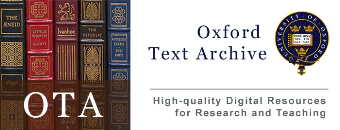![]() Introduction
Introduction
The certificate course in Sanskrit is designed for the beginners who do not have any knowledge of Sanskrit. At the successful completion of the course, the students will be able to gain a substantial knowledge of the basic structures of Sanskrit Language and its grammatical features, and to appreciate the literary works written in simple Sanskrit.
This course is targeted at the three following groups consisting of
local or foreign applicants: (i) those who do not have any prior
knowledge of Sanskrit, (ii) those who have only a limited knowledge
of it but wish to have a formal training, and (iii) those who
currently teach Sanskrit at educational institutes but wish to
receive a better training in learning and teaching Sanskrit, which
is recognized at the university level.
Graduates or those with any other academic and professional
qualification/s acceptable to the Board of Religious and Cultural
Studies will be eligible to apply. The number of Credits to be
qualified for the certificate in Sanskrit is six (08) credits from
the following compulsory courses.
Layout of Courses:
| Course Code | Course Title | Credits |
| SKT C/ 01 | Introduction to Sanskrit Language I | 04 |
| SKT C/ 02 | Introduction to Sanskrit Language II | 04 |
![]() Certificate Course Syllabus
Certificate Course Syllabus
Semester ONE
SKT C/ 01 - Introduction to Sanskrit Language I
| Course Code | SKT C/ 01 |
| Course Title | Introduction to Sanskrit Language I |
| Aim of the Course: | This course aims to introduce to the students the basic structure of Sanskrit Language by making them familiar with its key grammatical components. |
| ILOs | At the end of the course, the students will be able to show proficiency in the basic structure of Sanskrit language and use that proficiency to comprehend simple sentences. |
| Course Content | This course covers the following topics: (a) Sanskrit Devanāgarī Alphabet: (i) Vowels, (ii) Consonants, (iii) Vowel-markers, (iv) Diphthongs, (b) Conjugation of Verbs: First Conjugation (abvikaraṇa) - first (bhuvādi), fourth (divādi), sixth (tudādi), and tenth (curādi) classes (gaṇa), (i) Present tense (laṭ), (ii) Remote past tense (anadyatanātīta-laṅ), (iii) Remote future tense (bhaviṣyat-lṛṭ), (c) Declension of Nouns and Case system: (i) Masculine nouns ending in -a-, -i-, -u-, -ṛ-, (ii) Neutral nouns ending in –a-, -i-, -u-, (iii) Feminine Nouns ending in –ā-, -i-, -ī-, -u-, -ū-, -ṛ-, (d) Non-finite verbs (pūrvakriyā), (e) Infinitives (tumanta), (f) Participles / Words ending with kṛt affixes (kṛdanta): past participles ending in -ta suffix (atīta-kṛdanta), (g) Adjectives and adjectival Phrases, (h) Declension of Pronouns: tat, etat, idam, and their usage, (i) Indeclinables (avya): prepositions, postpositions, prefixes, (j) Rules of euphonic combinations (sandhi): Euphonic Combination of vowels, (svara sandhi): (i) by elongation (dīrgha), (ii) Augmentation (guṇa), (iii) Increment (vṛddhi), (iv) inversion (vyasta), (v) elision of ‘-a-’ (akāralopa), (vi) substitution (ādeśa) of –y-, -v-, -r-, -l- for –i-, -u-, -ṛ-, -ḷ- respectively, (k) Euphonic combination of consonants (vyañjana sandhi): (i) Substitution of sonants for surds (ghoṣādeśa), (ii) Substitution of surds for sonants (aghoṣādeśa), (iii) Substitution of ‘-m-’ for ‘-ṃ-’ (makārādeśa), (iv) Euphonic combination of visarga (visarga sandhi): Substitution of –o-, -ś-, -ṣ-, -s-, -r- for –ḥ-. |
| Select English References | i.
ජයසූරිය, එම්.එච්.එෆ්. 1961. සංස්කෘත ශික්ෂකය,
ප්රථම පුස්තකය. කොළඹ: රාජ්ය භාෂා
දෙපාර්තමේන්තුව. ii. ආනන්දමෛත්රෙය හිමි, බලංගොඩ. 1948. සරල සංස්කෘත ශික්ෂකය, ප්රථම භාගය. කොළඹ: ලංකාභිනව විශ්රැත යන්ත්රාලය. iii. භාණ්ඩාර්කර්, ආර්.ජී. 1958. සංස්කෘත ප්රථම පුස්තකය. කොළඹ: රාජ්ය භාෂා දෙපාර්තමේන්තුව. iv. Egenes, Thomas. 1996. Introduction to Sanskrit. Part I, II. Delhi: Motilal Banarsidass. v. Egenes, Thomas. 1990. Sanskrit workbook: learning the alphabet. Fairfield, Iowa: Maharishi International University Press. |
Semester TWO
SKT C/ 02 - Introduction to Sanskrit Language II
| Course Code | SKT C/ 02 |
| Course Title | Introduction to Sanskrit Language II |
| Aim of the Course: | This course aims to introduce further to the students the basic structures of Sanskrit Language through making them familiar with its grammatical features. |
| ILOs | At the end of the course, the students will be able to show proficiency in the structure of Sanskrit language and use that proficiency to comprehend complex sentences in non-technical contexts. |
| Course Content | This course covers the following topics: (a) Declension of Nouns ending in consonants: (i) Masculine nouns ending in –o-, (ii) Feminine nouns ending in –o- , -ṛ-, (b) Declension of pronouns - yat, kim, adas, yuṣmat, asmat, and their usage, (c) Indeclinables: Prepositions - cit, cana, api, (d) Participles/ Words ending with with kṛt affixes (kṛdanta) and Present participle (vartamāna-kṛdanta), (e) Rules of euphonic combination (contd.): Svara sandhi, Vyañjana sandhi, Visarga sandhi, (f) Conjugation of verbs: Moods - (i) Imperative (vidhi-liṅ), (ii) Benedictive (loṭ), (g) Passive voice (karmakāraka) and Causatives (prayojyakriyā/ ṇijanta), (h) Declension of nouns ending in consonants: Unchanging stems (avikāryamūla) -t-, -s-, -c-, -j-, -ṣ-, (i) Sanskrit Compounds (samāsa), (j) Textual Study - Selected passages from: (i) Sanskrit Readers - Bālādarśa, Prathamādarśa, Dvitīyādarśa, Abhinavapāṭhāvalī, (ii) Gnomic Literature: Pañcatantra, Hitopadeśa, Kathāsaritsāgara, (iii) Epic poetry: Mahābhārata, Rāmāyaṇa. |
| Select English References | i.
ජයසූරිය, එම්.එච්.එෆ්. 1971. සංස්කෘත ශික්ෂකය,
ද්විතීය පුස්තකය. කොළඹ: රාජ්ය භාෂා
දෙපාර්තමේන්තුව. ii. ආනන්දමෛත්රෙය හිමි, බලංගොඩ. 1960. සරල සංස්කෘත ශික්ෂකය, ද්විතීය භාගය. නුගේගොඩ: මොඩන් පොත් සමාගම. iii. Bhandarkar, R. G. 1921. Second Book in Sanskrit. Bombay: Radhabai Atmaras Sagoon. iv. Egenes, Thomas. 1996. Introduction to Sanskrit. Part I, II. Delhi: Motilal Banarsidass. v. Egenes, Thomas. 1990. Sanskrit workbook: learning the alphabet. Fairfield, Iowa: Maharishi International University Press. |









